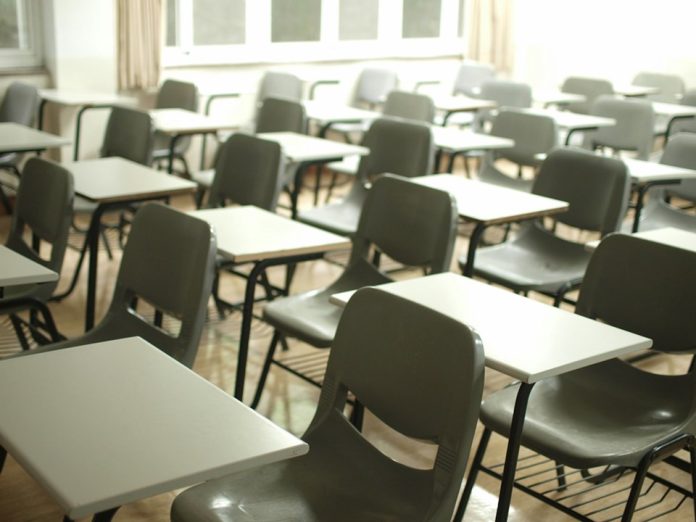
Cleo Ding
Local Journalism Initiative Reporter
Canora Courier
Students of Indigenous ancestry have long been underachieving because of the inadequate systems that have been put into place, acknowledged Quintin Robertson, Good Spirit School Division (GSSD) director of education, regarding a student learning outcome report in February.
“It’s the system that needs to change, not our Indigenous students,” Robertson said.
The report reads that the First Nations and Métis students face unique challenges in education, lacking equitable support and opportunities. When their cultural backgrounds aren’t reflected in the curriculum, students’ confidence and academic performance are negatively impacted – This disconnect can lead to higher dropout rates and long-term disparities in career opportunities.
For the 2022-23 school year, the number of K-12 students in Saskatchewan who graduated within the typical three-year period after beginning Grade 10 was for 47.9 per cent for Indigenous students and 88.0 per cent for non-Indigenous, according to the Ministry of Education.
About one in six students in the school district is self-identified as having Indigenous ancestry.
And it’s not just about the grades. Back in the classroom, Robertson said racism rears its ugly head frequently across the school division.
Without understanding the rich history and culture of First Nations and Métis people, stereotypes and biases can persist, writes the report.
“We understand that we need to do things differently,” Robertson said. “The Western way of educating needs to be adapted. We need to learn from our Indigenous partners, we need to explore other opportunities like land-based learning, we need to make sure that counselling services are in place, high expectations are in place, but support is also in place.”
‘Tremendous challenges, but also incredible opportunities’
“We’re losing our way of life. We are trying to revive it,” said Andrew Quewezance, 70, a Kici-Anishinaabe elder while holding the tobacco gifted by Robertson at the GSSD’s board of education meeting April 25, when speaking of carrying on the spirit of the treaties.
The room was quiet when the Indigenous representatives were invited to share their knowledge on their traditional cultural events and celebrations with GSSD trustees in the April board meeting.
Linking emotions with careful thoughts, Elder Quewezance began his speech by putting away the microphone and expressing his gratitude for nature, then moved onto building relationships with the same philosophy.
“You want to learn the language, learn important words of the language, respect, share. Learn those words first: ‘how are you,’ ‘how are you feeling’. Calm and simple,” Quewezance said.
The process of healing takes time, with generations of mistreatment and marginalization, Quewezance argues, thus cannot be rushed to meet the set timelines of reconciliation envisioned by the organization or the government.
As Elder Quewezance told the story, Robert Severight, an Indigenous Cultural Advocate, nodded.
Behind the board members sits the students yearning to learn and the worried parents.
“(A) Celebration of Life. Powwow is an event where we all come together, and we acknowledge each other, our kinship, our friends or relatives,” Severight said.
As an educator himself, Severight drew strength from traditions and used stories and real life examples to help youths’ decision-making.
Saskatchewan has integrated Indigenous studies into K-12 classes since 1986. Indigenous education is one of four key priorities of the 2023 Provincial Education Plan (PEP) with active involvement of representatives of First Nations and Métis education organizations, wrote a spokesperson with the Ministry of Education in an email.
The schools in the Good Spirit School Division have integrated measures of progress to meet the provincial education plan 2030 goal, such as student attendance and Grade 3 students reading at or above grade level.
GSSD has recently introduced the idea of a governance-to-governance arrangement where the elected from the Nations meet with the elected from the board, Robertson said.
“We have quite a few opportunities to meet with leaders and parents and knowledge keepers from our local nation to determine how we can do a better job with the students that are coming off the First Nations and those students who are from our urban and rural setting,” Robertson said.
“At the beginning of my career without being a board member, we used to go to Kamsack and the old high school, they’re in the gymnasium. We sat in a circle. It’s for five years in a row. Andrew, I believe you used to be there. We each need to shake hands and we went around and looked into the eye of the individual and around the circle and then back, sat down and shared information… And then we also had lunch,” recalled Bob Simpson, a GSSD trustee who covers Grayson, Melville and area.
After the presentation Severight wrote down thank you – Miigwech [pronunciation: mee gwe tch] – in his language, Nakawē, which is part of the Algonquian language family. He also wrote it down in Cree – hai, hai [pronunciation: hi hi].
“People are very forgiving. We’re very open and kind of share, willing to share, and teach,” Severight said with a smile.
The question is now how the principals and teachers will work mindfully with the Indigenous families to make sure if the education environment is culturally safe for the students.

